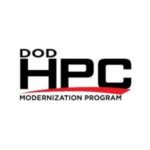“TSUBAME3.0 is expected to deliver more than two times the performance of its predecessor, TSUBAME2.5,” writes Marc Hamilton from Nvidia. “It will use Pascal-based Tesla P100 GPUs, which are nearly three times as efficient as their predecessors, to reach an expected 12.2 petaflops of double precision performance. That would rank it among the world’s 10 fastest systems according to the latest TOP500 list, released in November. TSUBAME3.0 will excel in AI computation, expected to deliver more than 47 PFLOPS of AI horsepower. When operated concurrently with TSUBAME2.5, it is expected to deliver 64.3 PFLOPS, making it Japan’s highest performing AI supercomputer.”
Interview: Bill Mannel and Dr. Eng Lim Goh on What’s Next for HPE & SGI
In this video, Bill Mannel, VP & GM, High-Performance Computing and Big Data, HPE & Dr. Eng Lim GoH, PhD, SVP & CTO of SGI join Dave Vellante & Paul Gillin at HPE Discover 2016. “The combined HPE and SGI portfolio, including a comprehensive services capability, will support private and public sector customers seeking larger high-performance computing installations, including U.S. federal agencies as well as enterprises looking to leverage high-performance computing for business insights and a competitive edge.”
SGI Awarded $27M Systems Contract with ARL
Today, SGI announced that the United States Department of Defense (DoD) has selected SGI ICE XA for two of its Army Research Laboratory Defense Supercomputing Resource Center systems. The upgrades are part of a technology insertion, known as TI-16, for their High Performance Computing Modernization Program (HPCMP). “We’re excited to partner with SGI for our TI-16 DoD program, and have full confidence in the system’s ability to provide excellent performance,” said Dr. Raju Namburu, director of ARL DSRC. “Choosing the right HPC partners is crucial, as we rely on supercomputing and large-scale analytics and predictive sciences to provide the competitive edge we need to maintain our position as the nation’s premier laboratory for land forces.”
Cheyenne – NCAR’s Next-Gen Data-Centric Supercomputer
In this video, Dave Hart, CISL User Services Manager presents: Cheyenne – NCAR’s Next-Generation Data-Centric Supercomputing Environment. “Cheyenne is a new 5.34-petaflops, high-performance computer built for NCAR by SGI. The hardware was delivered on Monday, September 12, at the NCAR-Wyoming Supercomputing Center (NWSC) and the system is on schedule to become operational at the beginning of 2017. All of the compute racks were powered up and nodes booted up within a few days of delivery.”
SGI Powers New Cirrus Supercomputer at EPCC
Businesses could dramatically cut the time taken to bring new products and services to market with help from a new SGI supercomputer at EPCC, the UK’s leading supercomputing center based at the University of Edinburgh. “This newly installed computing power – in tandem with EPCC’s in-house expertise – means we are well placed to help businesses meet many of the computational challenges associated with developing new products and services,” said George Graham, Commercial Manager of EPCC.
SGI and ANSYS Achieve New World Record in HPC
Over at the ANSYS Blog, Tony DeVarco writes that the company worked with SGI to break a world record for HPC scalability. “Breaking last year’s 129,024 core record by more than 16,000 cores, SGI was able to run the ANSYS provided 830 million cell gas combustor model from 1,296 to 145,152 CPU cores.This reduces the total solver wall clock time to run a single simulation from 20 minutes for 1,296 cores to a mere 13 seconds using 145,152 cores and achieving an overall scaling efficiency of 83%.”
Bright Computing Announces Reseller Agreement with SGI
“SGI and Bright Computing have been working together for the last year to provide our joint customers with enterprise level clustered infrastructure management software for production supercomputing,” said Gabriel Broner, vice president and general manager of HPC, SGI. “By partnering with Bright Computing, our customers are able to select the cluster management tool that best suits their needs.”
NCAR Selects SGI Supercomputer for Advanced Modeling and Research
Today the National Center for Atmospheric Research announced that it has selected SGI to build one of the world’s most advanced compute systems used to develop models for predicting the impact of climate change and severe weather events on both a global and local scale. As part of a new procurement coming online in 2017, an SGI ICE XA system named “Cheyenne” will perform some of the world’s most data intensive calculations for weather and climate modeling to improve the resolution and precision by orders of magnitude. As a result, NCAR’s scientists will provide more actionable projections about the impact of climate change for specific regions and assist agencies throughout the world develop more accurate weather predictions on a local and global scale.
UK Atomic Weapons Establishment Signs up for SGI ICE XA Supercomputer
Today SGI announced that the UK Atomic Weapons Establishment (AWE) will be one of the first customers to install SGI’s record-breaking SGI ICE XA supercomputers.
Video: Introducing the SGI ICE XA Supercomputer
“The ICE X is in production now. It is a compute-focused platform. At this show, we’re introducing the ICE XA. It adds several degrees of flexibility. With the ICE XA, we’ll still maintain the compute-only-density that we have in our ICE. But we have another blade available for that, which will enable accelerators, both GPU and Xeon Phi cards. We have an even third blade, will allow people to add hard drives and other IO devices. So, the flexibility of the ICE XA is what we’re talking about today at the show.”












